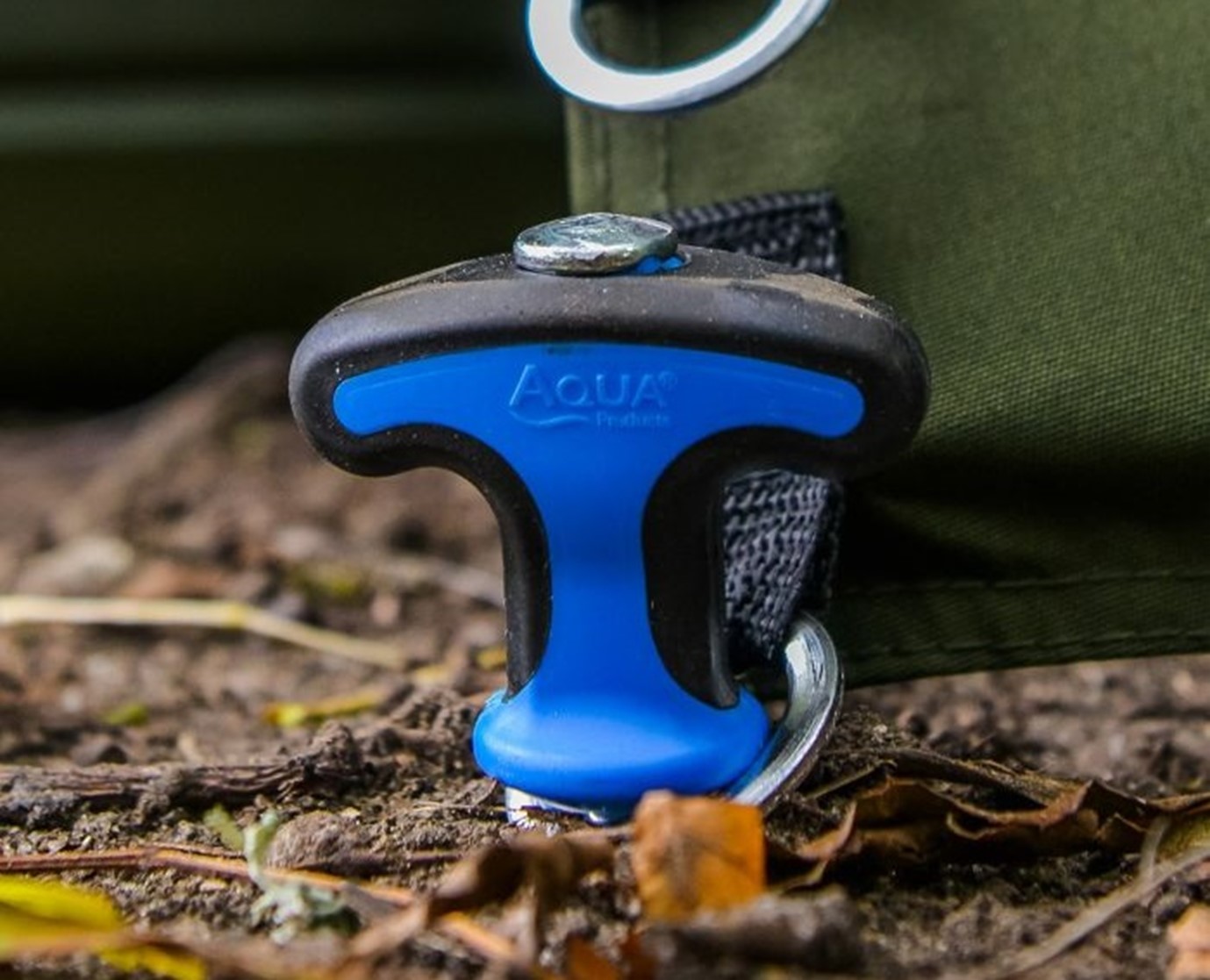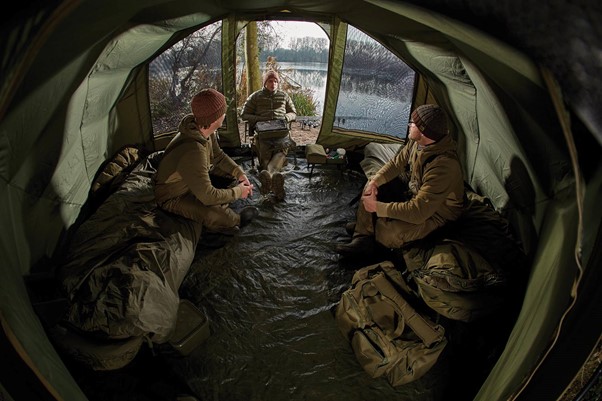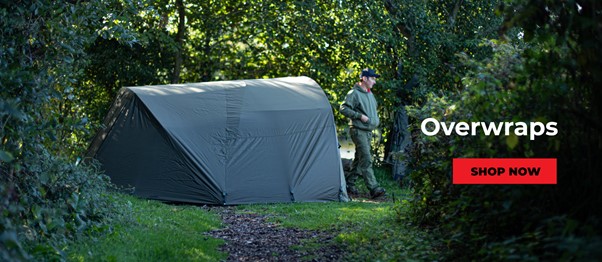This is a demo store. No orders will be fulfilled.
Top 5 Bivvy Tips for Long Session Angling

With the temperatures dropping this time of year, especially overnight, your bivvy is a place of real sanctuary away from the cold, wind and wet. There are a number of things that you can do to maximise your comfort; so we thought we would help out with our top 5 bivvy tips to help you get through the colder climate on a long session.
1) Where is the Best Place to Set up your Bivvy?
In the nice warm conditions you might want to have you bivvy facing your rods and the water in front of you, but on cooler days or nights, think about using your bivvy to shield against the elements. An example of this would be setting up your bivvy to the right or left of the swim, making use of surrounding foliage to help keep you out of the wind and feeling warmer. If conditions change unexpectedly then don’t be scared to move the location of your bivvy as you certainly will not regret it if it means a toastier sleeping bag and a few more hours of sleep.

2) How to Correctly Secure a Fishing Bivvy
Often an overlooked area of bivvy setup, making sure you peg your bivvy out correctly, and securely enough if of high importance. After selecting the best spot, you need to select which pegs to use for the terrain type and expended wind levels. It is wise to pack at least two sets of pegs and change between them depending on the firmness of the ground and conditions.
- Longer pegs: Use for soft ground with windy conditions.
- Shorter pegs: Helpful in firm ground.
It is not just the pegs you need to pack before taking off on your fishing trip but a decent mallet too. Although mallets are frowned upon and seen as ‘noddy tools’ or ‘uncarpy’, it is much easier to properly secure pegs and your bivvy by using one, especially when dealing with the tough ground. A secure bivvy will all the pegs perfectly placed is better than looking like a right fool, chasing after it if the wind whips up under it and it takes off.

3) The Importance of Fishing Shelter Groundsheets
Many bivvies come with a groundsheet but if not it is worth investing in one. A groundsheet can be a real lifesaver in cold, wet conditions as this shelter flooring helps increase the thermal properties of your bivvy. Groundsheets also reduce the dampness from the ground which can play havoc with you back after a night sleeping on the bedchair. When setting up a bivvy on muddy terrain, a groundsheet will also help you keep things generally tidier and free from mud, wet and other dirt.

4) Wrap Up Your Fishing Shelter
Plenty of bivvies come with the option of an additional overwrap. This might not be needed during the summer and on those warmer nights in autumn but as things get colder not only do they provide an additional layer of insulation but they also help reduce condensation and damp. Having condensation and damp can make things uncomfortable as well as increasing the risk of mould in your shelter.
Make sure you get an overwrap that fits your bivvy correctly to avoid condensation as well as pegging your overwrap, leaving a little gap between it and your bivvy. This will help reduce condensation and insulate you further. Check out the bivvy overwraps, skullcaps and more in your local AD or online.
5) How to Warm up your Fishing Shelter
Other than adding layers to your bivvy with overwrap options, you may want to consider some bivvy accessories to improve your stay at the bankside. You can land the fish of a lifetime but returning to your bivvy colder than an Icelandic prawn will kill that joyful mood. After the big fish buzz has worn off you might want some additional heat to feel comfortable again but be sure to pick a safe option of the heat source.
As a warning, some anglers have lost their lives or became very ill from using heaters with carbon monoxide gas stoves as they are capable of blowing up bivvies. A simple solution is a candle that is not placed too close to the bivvy material or to purchase a modern, safety checked bivvy heater. Some banks can offer electric or you can check out a gas heater.
Aside from clothing choices for a colder climate, having some pocket hand warmers can help keep your hands ready for the second your bite alarms scream, and a battle must pursue. Similar heat options include sleeping bag covers or a hot water bottle in your sleeping bag.

We hope these bivvy tips help you remain comfortable on those cooler nights so you can keep on enjoying your fishing. For bivvy lighting or more bivvy accessories check the items on the AD Website or visit reviews on the AD Blog and ADTV. Have you got any bivvy tips and tricks that improve your life on the bankside? Share them with us on our social media!



